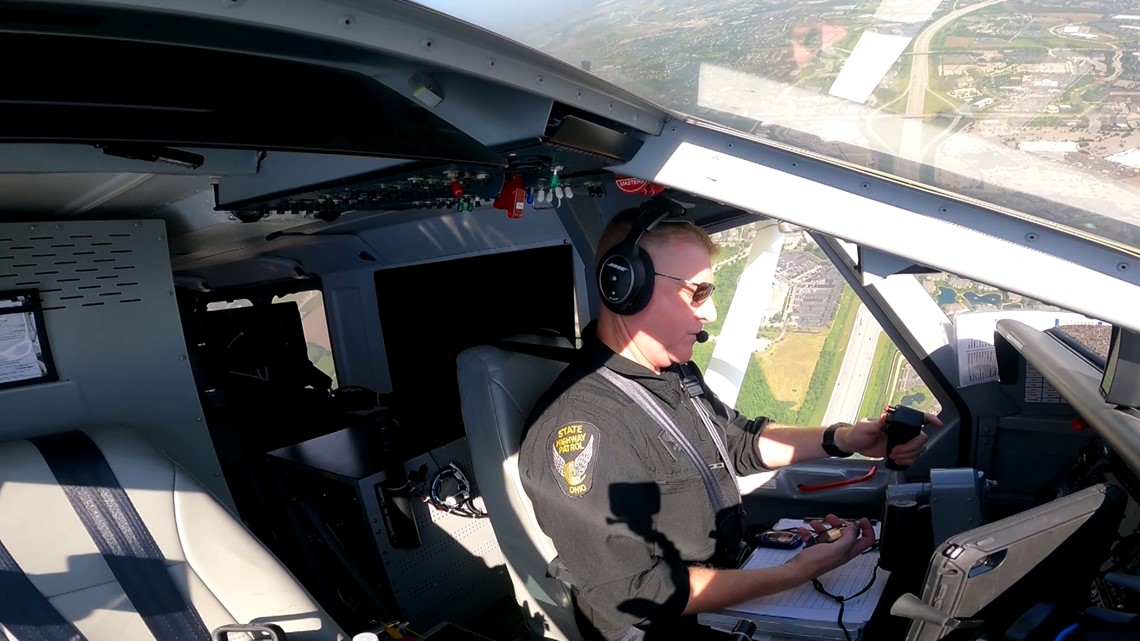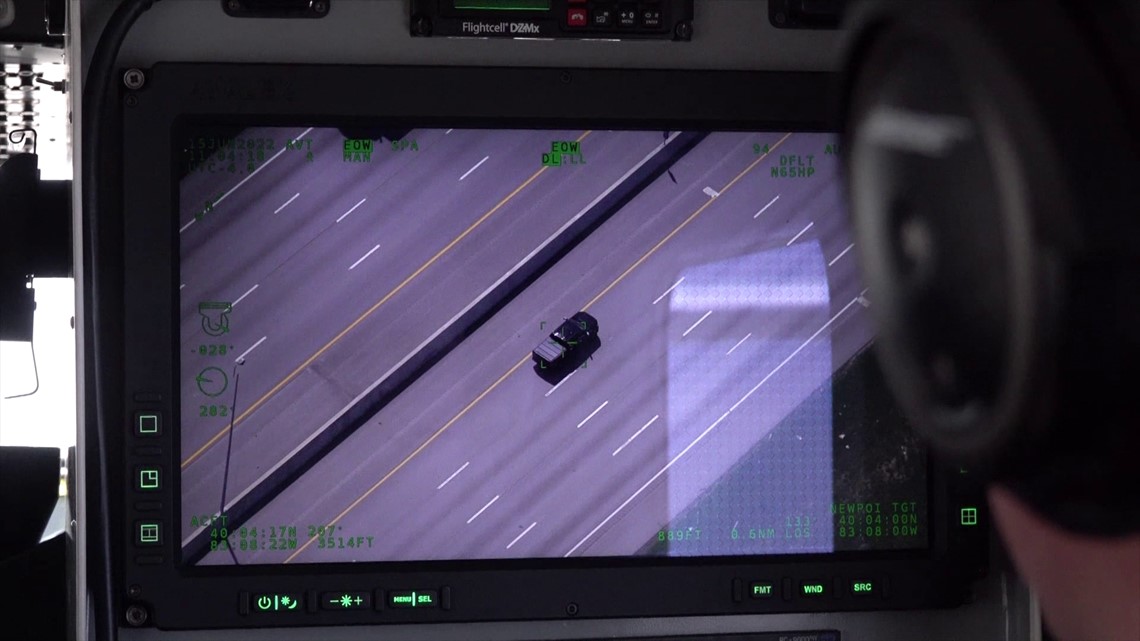COLUMBUS, Ohio — Since the 1960s, the Ohio State Highway Patrol has been using aircraft to help police on the ground catch up to speeders and aggressive drivers on the road. The technology hasn't changed much in that time, but upgrades are on the way.
To date, a Highway Patrol pilot has relied on a decades-old, tried-and-true system of stopwatches and markings on the ground to track the speed of drivers on the ground thousands of feet below them. When a target vehicle passes a marking, the pilot starts the clock.
The next marking is exactly 1/4 of a mile from the first. The clock is stopped when the target vehicle reaches that point.


"Doing that process, you can obtain an elapsed time or an average speed for that vehicle," Staff Lt. Justin Cromer, Aviation Section Commander for the Highway Patrol, explained. "You're tracking them over longer distances and you're obtaining average speeds as opposed to instantaneous speeds."
If the target vehicle is driving aggressively, or over the speed limit, the pilot radios to officers waiting on the ground, who conduct a traffic stop and alert drivers their speed was tracked by an aircraft. The process works, but it's time for an upgrade.
The fleet of 16 aircraft in the aviation section will be outfitted with new vehicle speed measurement systems — VSMs, for short — designed to make enforcement from above easier. They use a combination of cameras, GPS, and mapping software to "lock on" to vehicles and calculate speed. The flight crew is also expanded to include a tactical flight officer who works in conjunction with the pilot.
The system is still in the testing phase, but a reporter at WKYC in Cleveland was allowed to fly with the flight crew in Columbus to see it in action. During the mission, troopers targeted a section of Interstate 270 near Hilliard.
In less than an hour, 10 drivers were cited for aggressive speeds, some topping 100 miles per hour. For pilots in the sky, spotting the most aggressive drivers is easier than it would be for officers stationed on the side of the road.
"Airspeed enforcement is basically just looking at what the prevailing traffic is doing — how fast that one specific vehicle is moving — as a trend to all the other vehicles," Sgt. Christopher Hasty, who was flying the plane on this particular day, said. He then commented on a particular driver, "I can tell by the way that he's approaching all the other traffic around him that he's got a pretty good speed on the vehicle."
Using the new VSM, the flight crew still tracks the target vehicle over a period of time before alerting officers on the ground. In most cases, a driver's speed is checked miles before a traffic stop is initiated.


"I've got him in that quarter," Hasty calmly remarked on the radio, right there at 91 miles per hour."
Hasty's partner on this mission, Trooper Jeffrey Evans, would often assist by providing additional details he could see on using the high-powered camera system, including the specific make and model of the car officers would need to follow.
"It's a lot easier, it's a lot safer, and it's a lot more effective," Cromer said. "We can do much more from the air with two people on board the aircraft than what two officers on the ground can do."
In testing, the system had proven itself worthwhile, but there's also an approval process troopers must seek in the legal system before it can be used to prosecute violators.
"There is a court process that needs to be gone through to gain court acceptance of the procedure," Cromer explained, "so we need to do that step-by-step."
The system was first approved for use in Fairfield County and the process must be repeated in all of Ohio's 87 remaining counties before it can be used statewide.
“We started in Fairfield county last summer," Cromer said. "We took up their prosecutor's office and gave their judges a display of what it was. We received the approval there, we started working in that county, and then from there, we slowly stepped out to other counties."
Cromer says he hopes to have the system up and running in Greater Cleveland and Akron along with other metro areas around the state by the end of the year.
"Everybody's angry about tailgaters and aggressive drivers," Cromer says of the importance of the aviation unit. "This is the most effective way of capturing aggressive drivers."
So for drivers who are used to putting the pedal to the metal, you’ve been warned: Just because you don't see troopers as you're speeding down the highway, doesn't mean they don't see you.

